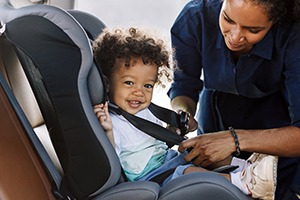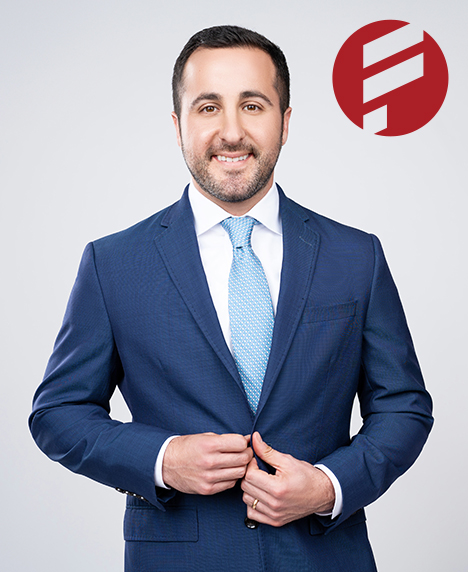When you become a parent, guardian, or caregiver, the safety and well-being of a child is of utmost importance -- especially while they are still small. There are countless precautions you can take to keep a child out of harm’s way in a variety of different environments. One of the most important places to keep in mind is your vehicle. This week is Child Passenger Safety Week, which aims to raise awareness of child injuries and deaths due to car accidents.
Car crashes are one of the leading causes of child deaths. In 2018, 636 children 12 years old and younger died in motor vehicle traffic crashes, and more than 97,000 were injured. In 2019, according to the US Department of Transportation, an average of two children under 13 years old were killed and an estimated 374 were injured every day while riding cars, SUVs, pickup trucks, and vans.
Evidence has shown time and time again that the impact of a car crash can cause severe and potentially fatal injuries to a child. However, the proper seating and positioning of a child in the car could not only prevent a catastrophic injury in the event of an accident, but it could save their life.
How Do I Choose A Car Seat?
It is important to know the four general types of car seats that you can use while driving with a child and the specific subtypes that will meet all parties’ needs for safety and efficiency.
Rear-facing Car Seats, the best kind of seat for an infant or toddler, face the back of the vehicle and include a harness. There are three different subtypes of rear-facing car seats that can accommodate a child as they grow:
- Infant car seats (rear-facing only) are small, portable, and only rear-facing. They are designed for infants who are at their smallest and most fragile. In the event of an accident, it would move with the baby and cradle with the force sustained, minimizing trauma to the baby’s neck and spinal cord.
- Convertible seats are a step up from an infant car seat, which a child usually outgrows by the time they turn one year old. Equipped with a harness and a tether, it provides more versatility for a child’s evolving needs.
- All-in-one seats have the ability to be backward facing and forward facing and include a harness and a tether. Additionally, they can be converted into a booster seat, accommodating a child as they grow over time.
Forward-facing Car Seats include a harness and tether to restrain the child in the event of a crash while facing the front of the vehicle. There are three different subtypes of a forward-facing car seat:
- Convertible seats, as mentioned previously, can change from a rear-facing seat to a front-facing seat with a harness and a tether.
- Combination seats change from a forward-facing car seat with a harness and tether to a booster seat.
- All-in-one seats can be forward-facing and rear-facing with a harness and tether and can be converted into a booster seat as well.
Booster seats position the child so they can reach their seat belt and have it cover the strongest parts of their body. There are four subtypes of booster seats:
- Booster seats with high backs not only boost the child’s height so they can be sufficiently be protected by their seat belt, but also provides head and neck support.
- Backless booster seats boost the child to meet their seatbelt sufficiently, except they do not have head and neck support. This type of booster seat is ideal for car seats with existing headrests.
- Combination seats can be converted from a forward-facing seat with a harness and tether into a booster seat.
- All-in-one seats accommodate the child’s growth from a rear-facing seat, to a forward-facing seat with a harness and tether, to a booster seat.
What Age Can A Child Sit In The Front Seat in PA?
Now that you know all the different types of car seats available, you may wonder when a child can graduate from car seats altogether. In Pennsylvania, children must be secured in a rear-facing car seat from birth to two years old and in an approved child safety seat until four years old. From ages four to eight, a child must be restrained in an appropriate booster seat. Children eight and up are required to use a seatbelt and must stay in the backseat of a vehicle until age 12.
According to the US Department of Transportation, a seatbelt should lie across the upper thighs and be snug across the shoulder and chest to restrain the child safely in a crash. It should not rest on the stomach area or across the neck or face. This could further injure the child in the event of a car accident and must be avoided.
Was Your Child Injured In a Crash?
Injuries inflicted on a child in a car crash can be devastating. In the worst cases, they can be fatal. A goal of Child Passenger Safety Week is to reduce these tragedies, but the unthinkable can still happen. If you or a loved one’s child was injured or killed in a car crash through no fault of their own, do not hesitate to contact the attorneys at Freeburn Law.
We will help you receive the best possible outcome for your experience and put your family on the road to justice. Call the 7’s at 717-777-7777 or submit a form on our website for a free consultation of your case.



